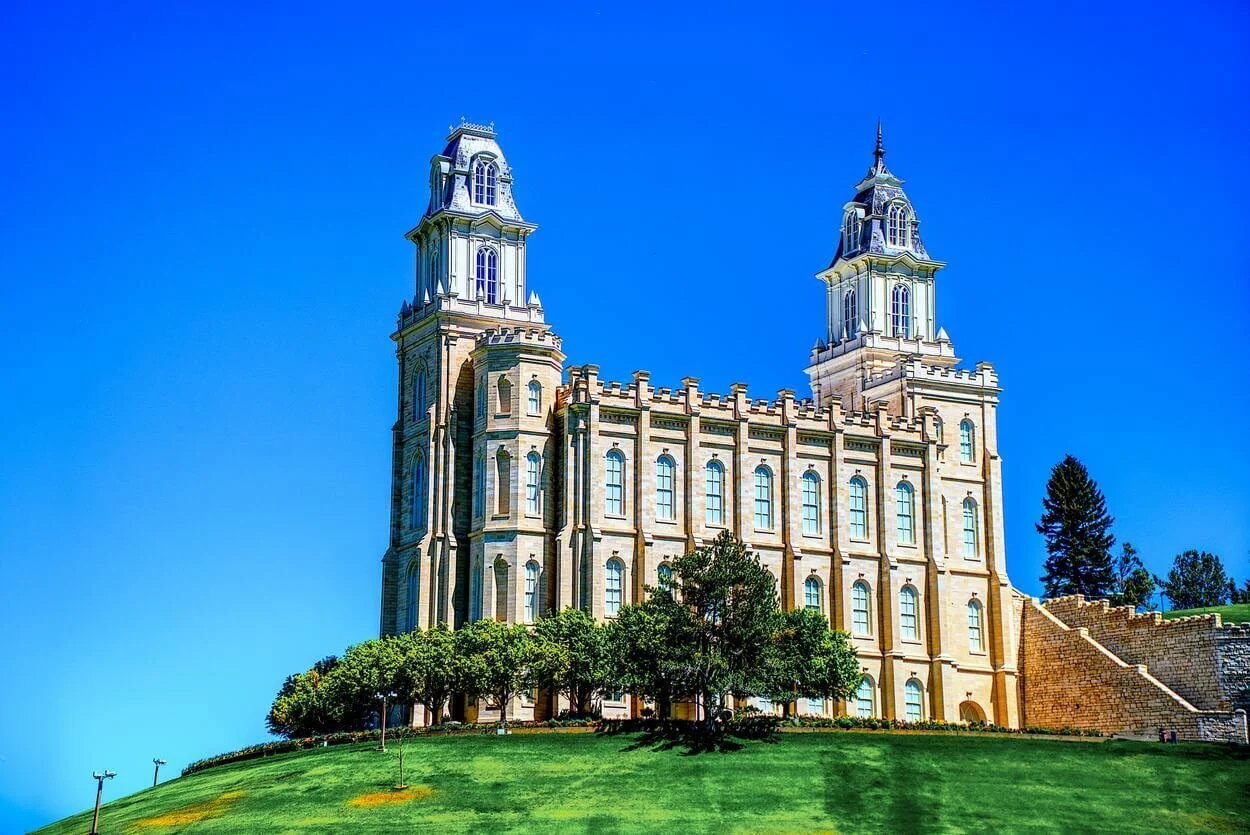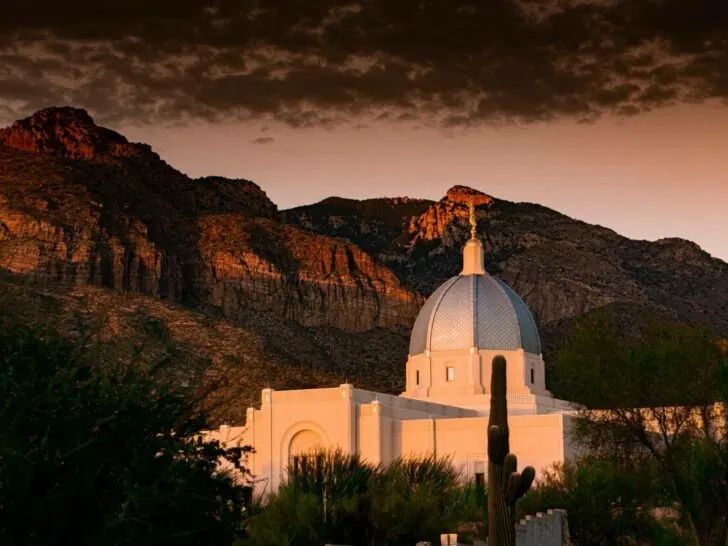People have different religious beliefs and practices. Today we will talk about some of the branches and sects of Mormonism. As one can easily get confused about which is which.
TBM stands for a “True Believing Mormon” or a “True Blue Mormon”. Whereas BIC usually refers to someone who’s “Born in the Covenant” or “Born into the Church”.
This article will provide a detailed account of the differences between a TBM and a BIC Mormon. However, before we get to that, let’s look at the concept of Mormonism and the Mormon church.
So let’s get right to it!
What is the Mormon Church called for short?
Mormon is officially called “The Church of Jesus Christ of Latter-day Saints”. It’s believed that this name came as a revelation from God to Joseph Smith in 1838.
Mormons are a religious group. They enfolded the concepts of Christianity and the revelations made by their founder, Joseph Smith. They belong to LDS, the Church of Latter-day Saints.
It’s headquartered in Salt Lake City, Utah. It has more than 16 million members from all over the world.
Another Mormon community is centered in Missouri, with about 250,000 members. In 1830 “The Book of Mormon” was published, and the religion was officially founded.
The full name of the church is preferred. When shortened, some references are like “the church” or the “Church of Jesus Christ”. The “restored Church of Jesus Christ” is also an accurate reference many use.
However, the term “Mormon church” has been used for ages publicly. It’s basically a nickname for the church but not an authorized title. The church also discourages people from using it.
Therefore, it’s advised not to use the abbreviation LDS or the nickname Mormon church as a substitute for the church’s name.
Mormon Terminology and Preferences
They also strictly prohibit the term “Mormon” from being used to refer to the members of the church. Instead, they encourage using the terms “members of the church of Jesus Christ” or “members of the restored Church of Jesus Christ”.
This is because “Mormon” is appropriately used in proper names such as “The Book of Mormon”. It’s also used as an adjective in historical expressions like the “Mormon trail”.
Moreover, they also believe that the term “Mormonism” is inaccurate. So to describe the combination of doctrine, lifestyle, and culture, the term “restored gospel of Jesus Christ” is preferred.
This combination is unique to the Church of Jesus Christ of Latter-day Saints. Otherwise, they find it derogatory.
They have many restrictions in place! Yet, people continue to use such terms on a daily basis. They find it easier as they’re shorter and don’t require one to say the full name every time they refer to a Mormon. However, they don’t wish to offend anyone.
What is the second anointing in the LDS Church?
In the Latter Day Saint movement, the second anointing is basically the pinnacle ordinance of the temple. It’s an extension of the endowment ceremony. The second anointing is also referred to as the second endowment.
Joseph Smith, the founder of the Mormon religion, claimed the ordinance’s purpose. This was to ensure salvation, exaltation, and confer godhood.
During the early times, this ordinance was performed more openly in Utah. However, the same isn’t the case today. Now it’s considered a secret LDS temple ordinance many church members are unaware of.
LDS church apostles regularly administer it to their elite friends, family, and leaders. For instance, the stake president, temple presidents, LDS general authorities, and their wives.
According to many reports, in this ordinance, an apostle washes the feet of the couple in the temple. The apostle “anoints” them on the head with oil. This basically guarantees them a place in the celestial kingdom.
The apostle then invites the couple to retreat to a room in the temple. Here the wife washes her husband’s feet. Then she lays her hands on his head to give him a special priesthood blessing.
The second anointing is basically regarded as the “proper marriage” in the Latter-Day Saint religion. A legal administrator with sealing power performs the ceremony in a holy temple.

What are the different branches of Mormonism?
There are many branches and sub-branches of Mormonism. Over 70 branches of Mormonism have been recorded over time with their relative origins and years of divisions. The mainstream Salt Lake City branch of Mormonism is the largest.
There are two main sub-branches in Mormonism. One is the Fundamentalist Church of Jesus Christ of Latter-day Saints (FLDS). While the other is the Church of Jesus Christ (the original doctrine).
In theory, there’s only one branch of Mormonism. It is no other than the Church of Jesus Christ of Latter-day Saints. Many splinter groups broke off from the LDS church and are currently established in Salt Lake City, Utah.
These are considered apostate groups with no true affiliation with Mormonism.
The LDS church claims its authority as bestowed upon the anointed prophet by Jesus Christ. He’s the president of the Church. No other organization can lay claim to any other authority apart from that. If the prophet doesn’t authorize it, it’s not part of the church of Jesus Christ.
However, from a scholarly perspective, many groups have splintered off from the main body of Mormonism. They formed their own groups. The largest and oldest is the “Community of Christ”. Formerly known as the reorganized Church of Jesus Christ of Latter-day Saints.
Diverse Branches of Mormonism
Moreover, the most popular of the Mormon branches is the fundamentalist Church of Jesus Christ of Latter-day Saints. This was established after the LDS church prohibited polygamy and is headed by Warren Jeffs and his family. They’re known for their polygamous lifestyle and the legal issues surrounding them.
The mainstream Salt Lake City Mormonism continues to preach Joseph Smith’s teachings over polygamy. They’re known as the real apostates, as polygamy still remains alive even after 110 years.
There were many other branches of Mormonism as individuals disagreed with certain policies. So, they followed a specific church leader.
Here’s a list of a few denominations from the Latter-Day Saint movements:
- The Church of Jesus Christ
- Apostolic United Brethren
- Apostolic United Brethren
- Restoration Branches
- Fundamentalist Church of Jesus Christ of Latter-Day Saints
- Church of Christ (Hedrickites)
What’s the difference between a TBM and a BIC Mormon?
TBM stands for a “True believing Mormon”. It refers to those Latter-Day Saints who represent the theoretical epitome of faithful devotion to the Church.
On the other hand, BIC usually refers to those “Born in the covenant”. This refers directly to individuals whose parents were previously sealed in the temple before birth.
The acronym TBM expresses a dismissive attitude towards loyal and faithful Mormons. People often see TBM Mormons as those who are extremists. They use this acronym in a derogatory manner and label them as “Totally Brainwashed Mormons”.
The acronym BIC now implies people baptized at eight and grew up in an active Latter-Day Saint environment. Only 30% of fundamentalist members are inactive Latter-Day Saints.
Eternal Family Bonds and Religious Identities
Mormons believe in the slogan that families are forever. They encourage the second anointing, where the couple and their children are sealed in the next life. So, the “sealing” is the joining together of a man, woman, and their children for eternity.
A person can choose to be both a TBM and a BIC. This is because BIC is associated more with their parents being sealed in marriage and to their children in the next life.
The powerful apostate performs the ceremony. Later on in their life, one can become a TBM.
The only difference is that one must be a BIC before being a true-believing Mormon. TBM and BIC are euphemisms used in Utah to describe faithful Latter-day Saints. However, these aren’t often used by anyone outside of Utah.

What is the difference between a Mormon temple and a Mormon church?
In the latter-day Saints movement, a temple was a building dedicated to being the house of God. It was only used for special forms of worship.
A temple is different from a church meeting house. A church is used for weekly worship services.
Mormons perform many ceremonies in the temple. The church is a simple and local place with a chapel where people can gather weekly. Although churches can vary, they have very similar designs.
However, the temple is a beautiful regional cathedral for special ceremonies like marriage. Temples are all individually designed.
Both a church and a temple are places of peace and worship. It’s just that one is used weekly, and the other is used for religious ceremonies occasionally. While churches are local, temples are less local and often have visitors or tourists who come to see their beauty.
They’re closed to the general public.
Here’s a video showing inside a Mormon Temple:
How is LDS different from Christianity?
The Mormon doctrine is very different from the orthodox Christian views about salvation. The difference is that Protestant Christians believe in faith alone for salvation. They criticize the LDS for believing that good works can achieve salvation.
However, Mormons feel that they’re highly misunderstood.
Mormons consider themselves to be Christians. However, they’ve had an uneasy relationship with traditional Christianity and its branches. For instance, with the Roman Catholics and Protestantism.
According to them, Mormonism and Christianity are identical. They believe that Mormonism is only restoring and perfecting Christianity. Whereas traditional Christianity believes that Mormonism has corrupted Christianity.
There are many differences between Christianity and Mormonism. Some are more central than others. For instance, the LDS church believes there isn’t any original sin. They also believe that humans can achieve godhood if they follow Mormon teachings.
Take a look at this table differentiating between Christianity and Mormonism:
| Mormonism | Christianity | |
| Place of worship | Church/Chapel, Temple | Church, Cathedral, Basilica |
| Clergy | Worthy male members, wards, stakes | Priests, Bishops, Nuns |
| Belief of God | God was once a man but ascended to godhood through obedience to the eternal law. | One God, Father, Son, and Holy Spirit. The Trinity |
| Origins | Upstate New York | Roman Province, Judea |
| Founder | Joseph Smith through revelations | The Lord Jesus Christ |
Final Thoughts
- TBM vs. BIC: Understand the difference between a “True Believing Mormon” and someone “Born in the Covenant.”
- Mormonism Overview: Learn about the origins and beliefs of the Mormon Church. It is officially known as “The Church of Jesus Christ of Latter-day Saints.”
- Name Preferences: Discover why the church prefers its full name. It discourages using terms like “Mormon.”
- Second Anointing: Explore the secretive temple ordinance. It is known as the second anointing in the LDS Church.
- Branches of Mormonism: Uncover the various components of Mormonism. It includes the Fundamentalist Church of Jesus Christ of Latter-day Saints.
- Key Differences: Delve into the distinctions between TBM and BIC Mormons. Explore how these terms are used.
- Temple vs. Church: Differentiate between the functions and purposes of Mormon temples and church meeting houses.
- Mormonism vs. Christianity: Gain insights into the differing beliefs of Mormons and traditional Christians. Know about salvation and other core principles.
This comprehensive guide offers a clear understanding of Mormonism. It explains the distinctions within this faith. It helps you navigate the complexities of its beliefs and practices.
You might also be interested in:
DIFFERENCE BETWEEN LIBERTARIAN & AUTHORITARIAN
WHAT IS THE DIFFERENCE BETWEEN PLACIDUS CHARTS AND WHOLE SIGN CHARTS IN ASTROLOGY?

